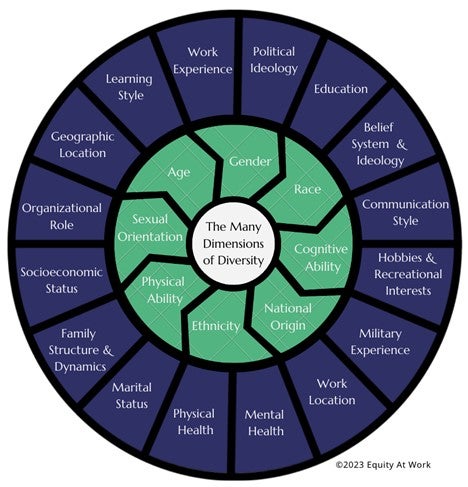Introduction:
The CWRU Libraries Diversity Committee's 2023-2024 action plan recommends that campus libraries focus on:
- Culture
- Collections
- Spaces
Culture will focus on staff training, development, and events, while collections and spaces will be addressed by implementing the recommendations from the audits and studies done during the previous diversity plan. This will be a collaborative effort that will engage staff across teams and campus libraries. Moreover, it will create an opportunity to seek guidance from and build relationships with groups on campus who are engaged in diversity, equity, and inclusion work.
CWRU Libraries Diversity Statement:
The Case Western Reserve University Libraries are deeply committed to serving people across all dimensions of diversity (appendix 1) by promoting a culture of social justice, anti-racism, inclusion, equity, diversity, and belonging so all people are welcome, heard, empowered, and valued.
Actions:
Initiative 1. CULTURE:
The CWRU Libraries Diversity Committee offers training and educational content focused on fostering a diverse, equitable, inclusive, and anti-racist library system. Shared language, understanding, and awareness of DEI and anti-racism will allow the staff to engage in needed conversations that will empower staff to shift their perspectives on how we work with patrons and structure our spaces, collections, and services. The goal is to be welcoming and equitable to all. Sustained focus on an education and development program supports our staff to provide service and collaboration to meet diverse needs.
Strategy. Work with different CWRU departments such as Office of Multicultural Affairs, OIDEO, LGBT Center, Office of International Affairs, and the Social Justice Institute to develop educational content for CWRU library staff. We will offer staff training sessions and events to all CWRU libraries and collaborate with departments that have developed programming.
Strategy. Develop and implement a communication plan for the CWRU libraries diversity committee at internal (CWRU libraries staff members) and external (campus community and beyond) level to ensure structure and consistency for communicating with our stakeholders.
Strategy. Review and modify student and staff hiring and employment practices that reflect our diversity statement. These will include but are not limited to using SMARTIE goals, forms that recognize pronouns/preferred names, and conversations with candidates about their diversity goals and experiences.
Strategy. Review and modify website content and CWRU libraries documentation and policies to utilize inclusive language that reflects all dimensions of diversity.
Strategy. Investigate opportunities and establish relationships with organizations in order to support career exploration for students representing broad dimensions of diversity, such as Cleveland Metropolitan Schools District’s PACE program or support a Freedman Fellow (or other type of dedicated student opportunity) around preparing a project highlighting diverse collections.
Initiative 2. COLLECTIONS:
Develop and enhance access to digital and physical collections and exhibits to uncover, promote, and celebrate dimensions of diversity, including the history of CWRU.
Strategy. Collaborate with CWRU Libraries’ various collection strategy committees and collection staff to implement use of the Diversity Framework adopted by the CWRU Libraries. For example, exploring the need and availability of non-English content.
Strategy. Explore the implementation of all-inclusive language and best practices in cataloging.
Strategy. Coordinate with campus offices to foster acquisition of diverse collection content and highlight the materials through virtual and physical exhibits, events, and collaborative outreach.
Strategy. KSL will support continued acquisitions of diverse library collections, such as the Anisfield-Wolf Book Awards collection, and promote access through the implementation of comprehensive, sustainable, and inclusive metadata.
Strategy. Collaborate with [U]Tech and our representatives to the campus-wide implementation committee in support of the university's actions towards a developing CWRU digital accessibility policy/plan. In addition, the CWRU libraries will determine what services each campus library can offer and provide advice on the marketing of the services.
Initiative 3. SPACES:
Implement the recommendations provided by the 2020 -2022 diversity working group when the budget allows it.
Strategy. Create space(s) that will support diverse needs of our community such as prayer, meditation, wellness, and neurodivergent resources and tools.
Strategy. Collaborate with University archivists to rename collaboration/study rooms, honoring diverse alumni and publicly sharing their histories.
Strategy. Review and adjust safety and security protocols to ensure that they are necessary, and inclusive, while doing no unintended harm to the community.
Revised September 2023
Appendix 1: Source: Equity at Work


